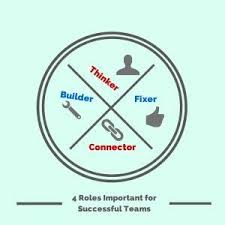What we offer leaders at The Big Joy Theory is a lens through which people can understand their own data for who they are as their own authentic leader. It is not about learning someone else’s model of how to lead. To keep trying to be somebody else’s version of a leader, unless by chance that model of leadership maps on to who you are do your own sense of authentic leadership presence, is in fact one of the most costly things you can do. The corporate mindset approach to leadership says, here is a model that we have deemed the best and so we are all going to use it without assessing any alignment with how our leaders naturally lead, let alone who they are through whole self. This approach is a slippery slope to compromising their leaders’ natural sense of who they are at their best, which can eventually have bottom-line impacts that can cost people their sanity, their jobs, and sometimes their career. Where’s the joy in that? The brighter side of leadership says, hey great leaders who are already leading well in so many ways here are some leadership frameworks, tactics, and tools that might help you and your team lead even better, building off of what is already working so well. But, let’s talk it through.

Successful Teams
In joy you don’t have to critique, but you can effectively explore your truth through various leadership models and frameworks. So this is not a critique to say that any model is wrong. It may be beneficial to someone for whom it authentically relates to. There will be people who look at this model for 4 roles of a successful team and say this is for me, this is for my team, and this fits in with my organization’s culture. That is joytastic! The exploration of this model is only for you to have a safe space to truly explore theories and frameworks that are out there to get a sense of how they truly apply to who you are through the wisdom of your own joy!
When we look at leadership through the lens of joy, and all of its guiding principles, it is clear to see that there couldn’t possibly be only four roles, five types, or ten characteristics of what it means to be a productive leader or to have a great team. The truth in joy is that there as many types of leading well as there are people in the world!
Leadership Comes From Within
"In joy, leading well is about being the best version of you"
The Big Joy Theory Tweet
Focusing on models that purport to work for everyone, or even for most people, can pull many leaders outside of their own authentic leadership presence. It is an escape that allows them to not have to think deeply about themselves as leaders and what that really means. The corporate mindset would suggest that everybody needs to be trained on this model because it has been deemed to be the leading model that everyone should use. On the brighter side of leadership every leader is allowed to remain centered in their own authentic leadership presence and modify their personal model of leading well as informed by other models, tactics, and tool. This allows leaders to remain whole within themselves and curious about learning more about who they are as a leader, how they can more effectively show up as the leader that they want to be, and more capable of achieving their goals in a way that benefits themselves, the team, and/or the organization. Even if we apply the 4 roles for successful teams model, it shifts the focus from everyone feeling like they have to use the model to teams being curious about how and where is can be relevant for them as individuals and/or as a group that wants to focus on enhancing the model of communication that they already have within themselves.
At best, you could only be a second rate version of someone else but you can always be the best at being you
The Big Joy Theory Tweet
You Can Enhance Your Model Of Leadership
If you step into your whole self then you can clearly see, feel, and understand that your authentic leadership presence is truly unique to you. Even if somebody else has similar strengths, values or any other leadership characteristic that you might identify with, you can certainly appreciate that their expression of those very same shared characteristics will be different. Further, through joy, it becomes possible not only for individuals to have their own authentic leadership presence, but also for teams to have a unique way in which they work together. So, you don’t have to focus on whether your team has those four components of the 4 roles for successful teams leadership model, per se. You are welcome to say that you really like the 4 roles for successful teams model of leadership. You’re welcome to simply better understand this model and to be curious about how it could elevate the productivity of your team. You could also look to a hundred other leadership models and thousands of lists of characteristics that leaders in teams should have and begin to see which ones truly work best for you. What is important is that leaders are in the best position to bring their whole selves to the work and in doing so can achieve some of those characteristics named and identified in the model, selected through joy.

